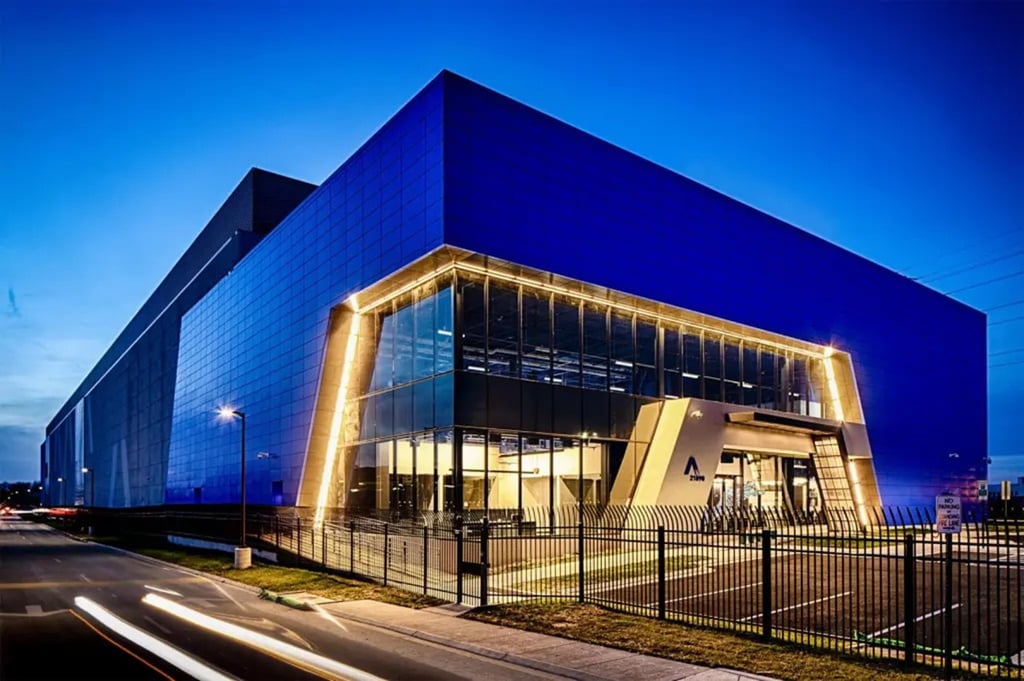According to Gartner’s Magic Quadrant for x86 Server Virtualization Infrastructure 2015, about 75 percent of x86 server workloads are currently virtualized. What began some eight to ten years ago as a way to consolidate underutilized physical systems into less costly virtual ones has become an industry standard.
If Gartner’s estimate is correct, then most companies are now taking advantage of the reduced cost and increased agility that virtualization offers its converts. Server virtualization has led the way to more efficient hardware that can support dozens of virtual workloads as independent operating systems that look and feel just like their physical counterparts. It has also led to hardware-enhancements for virtualization, more efficient disk space allocation, better virtual host software, shorter system boot times, and better overall hardware utilization.
In Gartner’s report, it noted seven leading companies that have distinguished themselves above the din of noise in this space. This list profiles those companies and provides information based on their market positions and offerings in the server virtualization space. They are in no particular order.
VMware – ESXi
Key differentiators: Longevity, EMC is its parent company, strategic partnership with Cisco, a huge global install base, customer satisfaction, long list of support guest OSs, and third-party support.
Since it created the x86 server virtualization market back in 1999, VMware has been the dominant market leader. VMware continues to innovate by adding new features and capabilities to its long list of virtualization and associated support products. Businesses of all sizes from the smallest mom and pop shops all the way up to the world’s largest enterprises use VMware’s scalable virtualization solutions. Gartner’s surveys reveal that about half of all midmarket companies, those with 100 to 1,000 employees, use VMware.
VMware supports a very long list of guest operating systems including Windows, Mac OS X, Linux, FreeBSD, Solaris, NetWare, and others. It supports every major hardware manufacturer’s server systems that either use Intel or AMD CPUs with virtualization enhancements. VMware can use a variety of different storage types including local disk, SAN, NAS, and USB-attached storage.
Although VMware’s cost is comparatively high, its customer satisfaction is also very high.
Microsoft – Hyper-V
Key differentiators: Microsoft’s support, ubiquitous footprint, easy-to-use interface, longevity, and cost competitiveness.
If VMware is server virtualization’s 800-pound silverback gorilla, then Microsoft is the 400-pound adolescent who wants to be virtualization’s alpha prime. Although it doesn’t have the longevity or the guest operating system support that VMware does, it supports the major Linux distributions and all Windows operating systems, which it assumes is 99 percent of any datacenter’s install base.
Although Microsoft’s Hyper-V runs a distant second place to VMware’s market share, it is a strong contender because of the ubiquity of Microsoft server operating systems in data centers. Microsoft has also made its Hyper-V offering very wallet-friendly by offering free guest OS licenses when purchasing certain host operating systems and it’s having an impact on VMware’s market dominance.
Microsoft has also closed the functionality gap between VMware’s features and Hyper-V’s. The biggest problem that Microsoft faces with Hyper-V as a VMware challenger is that its host OS (Windows server) is far more vulnerable to malware, security-related hacks, and downtime related to patching reboots. Additionally, it lacks the guest OS density that customers enjoy with VMware. And although Microsoft has made some inroads in its operating system stability over the years, its overall customer satisfaction still suffers. It continues to face management tools problems and increased competition from open source solutions.
Odin – Virtuozzo Containers for Linux and Windows
Key differentiators: Virtuozzo containers for Linux and Windows, highest virtual machine density for server virtualization, large service provider install base, and low cost.
Odin, formerly Parallels, offered container virtualization before it was a thing. For years, they’ve offered service providers a way to maximize profits, maximize multi-tenancy, and minimize security risks of a multi-tenant, hosted services community. Although Odin has primarily focused on service providers, it does see the potential for enterprise adoption. Odin is the creator and major contributor to the OpenVZ project, which is an open source version of its Linux Virtuozzo container offering.
OpenVZ, in its ten-year existence, has gained widespread popularity in multi-tenant hosting environments and is the container virtualization engine in the hybrid open source hypervisor, Proxmox.
Odin’s biggest differentiator in the x86 server virtualization market is its Windows Virtuozzo container technology. This technology makes multi-tenancy for providers and enterprises easy and cost-effective. Windows containers work in the same way as their Linux counterparts do. The host system has its resources divided up into containers that share some files, the Windows kernel, system memory, and underlying hardware. Like Linux containers, Windows containers have their own IP addresses, their own users, and their own complement of applications. The container functions like any other Windows system. However, Windows virtual private server (VPS) administrators don’t have to worry about patches, drivers, or other host-oriented software. For most users, they never know that the system they’re working on is a container.
Competition has tightened up on Odin as containerized application solutions such as Docker and rocket become mainstream. Microsoft has added additional competitive pressure in the service provider market with its Azure cloud-computing platform, although many providers offer both Odin and Microsoft options to their Windows customers.
Huawei – FusionSphere and FusionCloud
Key differentiators: Products leverage open source software including OpenStack, Xen, and KVM, offers a full complement of server virtualization hardware and software, and is popular in emerging markets.
Huawei is very strong in China (its headquarters) and other emerging markets, such as Russia, Brazil, and India, with its ever-growing portfolio of virtualization hardware and software. Its OpenStack-based architecture makes its technology palatable to those who appreciate a more open source type business model. Huawei also touts its end-to-end security hardening, multiple disaster recovery plans, and other security features such as Trusted Computing and Trusted Platform Module.
Huawei, although widely accepted in emerging markets, has yet to break into mature markets, such as North America mostly due to national security concerns. However, analysts believe that this resistance is less of a security issue and more of a geopolitical one. Most of its referenceable data comes from China, companies should research the levels of local support, certification, and interoperability.
Oracle VM
Oracle – A pioneer in the RDBMS market with more than 35 years in the global marketplace, financial strength, large install base, superior support, owns Solaris operating system, able to leverage zone computing (containers).
Oracle VM is Oracle’s virtualization solution based on the Xen hypervisor. Interest in its virtualization technology is mostly from customers wanting a single vendor solution and Oracle provides special software licensing pricing for those customers choosing to use Oracle VM. Although Oracle has certified its software on Hyper-V, the special pricing does not extend to those using it. Oracle VM is a Xen hypervisor built on its Oracle Linux distribution, which is a Red Hat Enterprise Linux distribution optimized for Oracle workloads. Although KVM is a full server virtualization technology, Oracle also offers Solaris Zones and Oracle Linux Containers as part of its virtualization portfolio.
One Oracle solution advantage is its Enterprise Manager product that allows administrators to manage and monitor applications, infrastructure, and is the service delivery platform for cloud services. For companies looking for a single vendor solution for virtualization, database-related products, or enterprise applications, Oracle covers the gamut, but just as often its push for an Oracle-only stack limits its broader market potential and appeal.
Citrix – XenServer
Key differentiators: XenServer is a free, open source solution, a huge reseller channel, and very successful deployments of XenDesktop and XenApp.
XenServer is an excellent product offering, but it has never enjoyed the adoption rates of its competitors in the server virtualization market despite its other successes such as XenApp, XenDesktop, and CloudPlatform. It appears that Citrix no longer competes with Microsoft and VMware in the “traditional” server virtualization space, but has rather focused its efforts on making XenServer an attractive cloud-computing platform and for underlying support for its other products.
Although having a 100 percent open source solution used to be a significant differentiator, today it is not. Open source solutions featuring Linux, KVM, Linux containers, and OpenStack are commonplace. Companies like Citrix must find other areas in which to differentiate themselves in the market. Citrix has done so for its desktop virtualization (XenDesktop) and application virtualization (XenApp) offerings.
In the x86 server virtualization market, Citrix is likely to remain a niche player for either for Citrix shops or for those businesses that have chosen to shun Microsoft’s or VMware’s proprietary offerings. To differentiate itself in this space, Citrix needs to innovate and at least provide comparable or better features than its competitors do.
Red Hat – Red Hat Enterprise Virtualization (RHEV)
Key differentiators: Most successful open source company in history, huge install bases for Red Hat Enterprise Linux (RHEL), and has excellent customer support.
It seems clear from Red Hat’s position in the server virtualization market that its RHEV target customers are those who have embraced RHEL as a server platform, but who also need to virtualize applications either on KVM full virtualization or on Linux containers (LXC). Red Hat offers a third alternative for those neither wishing to adapt to vendor lock-in with Microsoft or with VMware. RHEV offers full server virtualization (traditional virtualization) and containers. Red Hat has also integrated OpenStack products into RHEV.
One of Red Hat’s differentiators is its success as an open source company, but even that status has waned in recent years as more companies embrace open source solutions including RHEL itself, OpenStack, and Docker. However, Red Hat’s status in the server virtualization market places it at a distant third behind leader VMware and runner-up Microsoft.
RHEV doesn’t have the widespread appeal for full server virtualization either in the Windows virtual machine or in the Linux virtual machine spaces, but continues to gain traction with its CloudForms cloud management platform that provides hybrid cloud management capabilities for VMware, RHEV, Hyper-V, OpenStack, and Amazon’s EC2.
Summary
Server virtualization is a broad market, but the clear leaders are VMware, the perennial favorite, and Microsoft, the up-and-comer. The other companies in the market are at a significant disadvantage with VMware’s established, widespread adoption and Microsoft’s marketing machine. The challenges to the other companies in this space, with the exception of Huawei, which has an ever-growing footprint in emerging markets, is that they are generally considered to be niche players with no established direction or customer focus for their products. VMware and Microsoft are both very difficult to displace from data centers. Larger businesses do sometimes trade Hyper-V for VMware ESXi or vice versa, but rarely do they venture from those two key providers.
The future of server virtualization seems to be moving away from full virtualization and moving toward containers such as those provided by Odin, Docker, Red Hat, Oracle, and by various open source solutions currently available. Containers are portable, agile, small, and the perfect solution for cloud-computing solutions, which is the next logical step for companies wanting to commoditize their applications and their services.
Photo courtesy of Shutterstock.
-
Huawei’s AI Update: Things Are Moving Faster Than We Think
FEATURE | By Rob Enderle,
December 04, 2020
-
Keeping Machine Learning Algorithms Honest in the ‘Ethics-First’ Era
ARTIFICIAL INTELLIGENCE | By Guest Author,
November 18, 2020
-
Key Trends in Chatbots and RPA
FEATURE | By Guest Author,
November 10, 2020
-
Top 10 AIOps Companies
FEATURE | By Samuel Greengard,
November 05, 2020
-
What is Text Analysis?
ARTIFICIAL INTELLIGENCE | By Guest Author,
November 02, 2020
-
How Intel’s Work With Autonomous Cars Could Redefine General Purpose AI
ARTIFICIAL INTELLIGENCE | By Rob Enderle,
October 29, 2020
-
Dell Technologies World: Weaving Together Human And Machine Interaction For AI And Robotics
ARTIFICIAL INTELLIGENCE | By Rob Enderle,
October 23, 2020
-
The Super Moderator, or How IBM Project Debater Could Save Social Media
FEATURE | By Rob Enderle,
October 16, 2020
-
Top 10 Chatbot Platforms
FEATURE | By Cynthia Harvey,
October 07, 2020
-
Finding a Career Path in AI
ARTIFICIAL INTELLIGENCE | By Guest Author,
October 05, 2020
-
CIOs Discuss the Promise of AI and Data Science
FEATURE | By Guest Author,
September 25, 2020
-
Microsoft Is Building An AI Product That Could Predict The Future
FEATURE | By Rob Enderle,
September 25, 2020
-
Top 10 Machine Learning Companies 2020
FEATURE | By Cynthia Harvey,
September 22, 2020
-
NVIDIA and ARM: Massively Changing The AI Landscape
ARTIFICIAL INTELLIGENCE | By Rob Enderle,
September 18, 2020
-
Continuous Intelligence: Expert Discussion [Video and Podcast]
ARTIFICIAL INTELLIGENCE | By James Maguire,
September 14, 2020
-
Artificial Intelligence: Governance and Ethics [Video]
ARTIFICIAL INTELLIGENCE | By James Maguire,
September 13, 2020
-
IBM Watson At The US Open: Showcasing The Power Of A Mature Enterprise-Class AI
FEATURE | By Rob Enderle,
September 11, 2020
-
Artificial Intelligence: Perception vs. Reality
FEATURE | By James Maguire,
September 09, 2020
-
Anticipating The Coming Wave Of AI Enhanced PCs
FEATURE | By Rob Enderle,
September 05, 2020
-
The Critical Nature Of IBM’s NLP (Natural Language Processing) Effort
ARTIFICIAL INTELLIGENCE | By Rob Enderle,
August 14, 2020
SEE ALL
DATA CENTER ARTICLES







